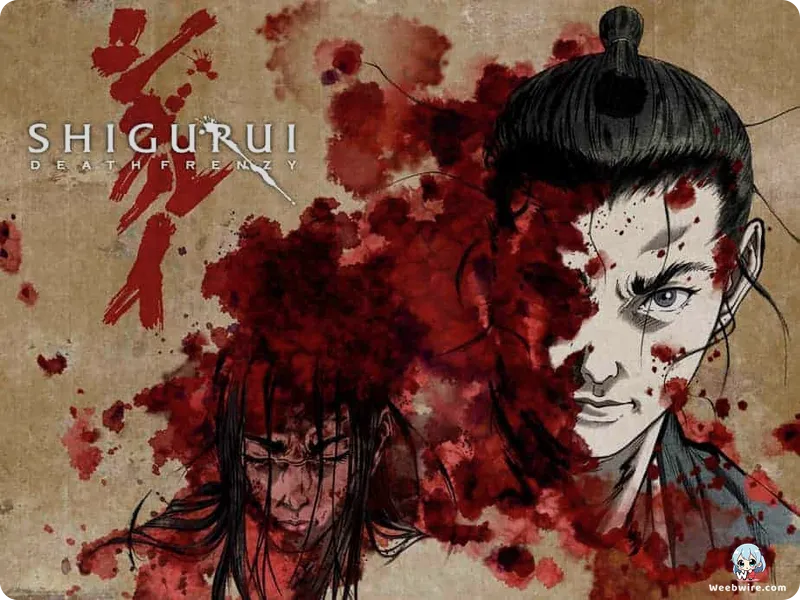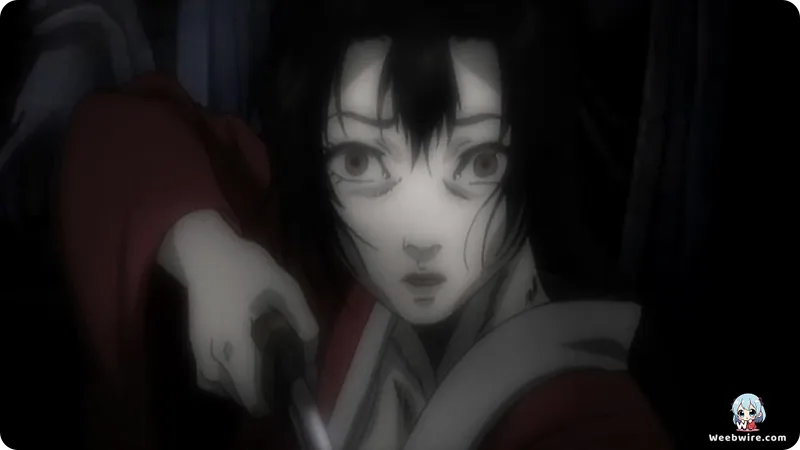MADHOUSE's "Shigurui: Death Frenzy": Unearthing the Brutal Truth of Samurai Life in a Cult Anime Classic

In a landscape often romanticizing the samurai era, one anime stands apart for its brutal, unvarnished depiction of feudal Japan: Shigurui: Death Frenzy. This 2007 masterpiece from the renowned MADHOUSE studio isn't merely another samurai tale; it's a profound dive into psychological torment, physical decay, and the harrowing consequences of a life dictated by the sword. While it may not command the widespread mainstream appeal of its counterparts, Shigurui has firmly cemented its status as a cult classic, lauded for its unwavering artistic integrity and its relentless portrayal of a world stripped bare of heroism. The series offers a chilling, unique perspective on an era often glossed over.
The Deep Roots of Its Narrative
A key facet contributing to Shigurui: Death Frenzy's profound depth is its intricate literary heritage. Unlike many anime that are direct manga adaptations, Shigurui boasts a sophisticated, multi-layered lineage. The anime itself is a faithful adaptation of Takayuki Yamaguchi's manga, also titled Shigurui, which in turn draws its narrative from the opening chapter of Norio Nanjō's historical novel collection, Suruga-jō Gozenjiai (The Tournament at Sunpu Castle). This meticulous journey from novel to manga to screen imbues the series with a narrative richness and character complexity rarely encountered. Yamaguchi's manga is celebrated for its hyper-detailed, often visceral artwork, a visual language that MADHOUSE painstakingly translated to animation, ensuring the full, agonizing impact of every severed limb and crimson gush. This commitment to the source material's graphic essence is central to the anime's identity and a significant factor in its specialized appeal, drawing in viewers who crave an unfiltered experience.
MADHOUSE's Unflinching Artistic Vision
MADHOUSE's directorial vision for Shigurui is nothing short of brilliant, crafting an atmosphere that is both oppressive and captivating. Eschewing rapid-fire action, the studio embraces a deliberate, almost excruciatingly slow pace, allowing tension to coil and build through pregnant silences, nuanced character expressions, and painstaking environmental detail. The animation utilizes a subdued color palette, dominated by earthy browns, muted grays, and deep, blood-like reds, creating a suffocating visual tone that perfectly mirrors the grim narrative. This artistic choice stands in stark contrast to the vibrant, dynamic styles often seen in other action-centric anime. Furthermore, the integration of traditional Japanese art influences, particularly in its static, almost painting-like compositions, elevates the series from mere entertainment to a timeless work of art, inviting viewers to ponder its grim beauty.

A Brutal Dissection of Bushido
At its core, Shigurui relentlessly dissects the darker facets of Bushido, the revered samurai code of honor. It strips away romanticized notions to expose the desperation, depravity, and profound psychological scars it could inflict upon its adherents. The narrative revolves around the fated rivalry between two swordsmen, Fujiki Gennosuke and Irako Seigen, whose shared misfortunes and entwined destinies culminate in a brutal tournament before Lord Tadanaga Tokugawa. The series excels in its psychological penetration, delving deep into the characters' twisted psyches and driving motivations. Their physical deformities and disabilities are not just plot devices but powerful symbolic manifestations of their internal corruption and the brutal world they inhabit. The anime masterfully illustrates how their personal traumas and burning vendettas fuel an endless cycle of violence and suffering, offering a stark, unflinching commentary on the human condition pushed to its absolute limits.
The Haunting, Unresolved Conclusion
Perhaps one of the most discussed and often surprising elements among its dedicated fanbase is the anime's conclusion. Shigurui: Death Frenzy comprises only 12 episodes and, notably, does not encompass the entirety of Takayuki Yamaguchi's manga. The series concludes abruptly, leaving the central, simmering conflict between Fujiki and Irako unresolved. This creative decision, whether a deliberate artistic choice or born of production constraints, has long fascinated and, at times, frustrated viewers. For those unfamiliar with the manga, the ending can feel profoundly incomplete, a sudden halt to the narrative just as the tension reaches its zenith. However, for many, this open-ended conclusion powerfully reinforces the anime's overarching themes of impermanence and the inherent futility of existence in a brutal world, compelling the audience to contemplate the characters' inevitable, unseen fates. It stands as a rare example of an anime adaptation choosing to cease before its source material's resolution, leaving a lasting, haunting impression precisely through its incompleteness.
Immersive Soundscapes of Suffering
Further enhancing its deeply immersive quality is the anime's exceptional sound design. Shigurui leans heavily on ambient sounds and the visceral reality of combat. The wet squelch of blood, the rasp of a blade against bone, the strained, desperate breathing of a dying warrior—these auditory details are meticulously crafted to intensify the viewer's experience, making every strike and impact feel agonizingly real. This precise emphasis on sound, combined with the deliberate pacing, allows the audience to truly absorb the horror and pain depicted on screen, cultivating an almost suffocating atmosphere that few other anime manage to achieve. Shigurui: Death Frenzy is decidedly not for the faint of heart, nor is it for those seeking conventional samurai heroism. Instead, it delivers a deeply unsettling, psychologically intricate, and artistically audacious exploration of a dark chapter in feudal Japan, solidifying its standing as a truly unique and unforgettable entry in the anime canon.
Credits
Shigurui: Death Frenzy
Author
Takayuki Yamaguchi
Cover Art
Takayuki Yamaguchi
Studio
MADHOUSE
Publisher
Akita Shoten
Producers





